People "will start becoming technology" says human cyborg
Technology will increasingly be integrated into the body "to extend our abilities, our knowledge and our perceptions of reality", according to Neil Harbisson, the first officially recognised human cyborg (+ interview).

"We will stop using technology as a tool and we'll start using technology as part of the body," said Barcelona-based Harbisson, who wears a head-mounted antenna attached to a chip at the back of his skull that allows him to perceive colours. "I think this will be much more common in the next few years."
Harbisson wears the "eyeborg" headset to overcome a visual impairment called achromatopsia, which means he sees the world in shades of grey. The eyeborg turns colours into sounds, allowing him to "hear" them and meaning he qualifies as a cyborg, or cybernetic organism - a living being with both natural and artificial parts.
"Feeling like a cyborg was a gradual process," he said. "First, I felt that the eyeborg was giving me information, afterwards I felt it was giving me perception, and after a while it gave me feelings. It was when I started to feel colour and started to dream in colour that I felt the extension was part of my organism."
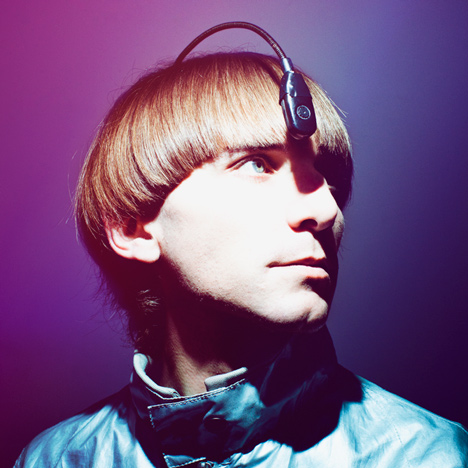
"The sounds are transmitted through my bone to my inner ear, which allows me to interpret what colours are according to the different sign waves of each sound."
Harbisson charges his eyeborg via a USB power cable that attaches to the back of his head. "The aim [in future] is not to use electricity but to start finding ways of charging the chip [in my head] with my own body energy," he explains. "I might be using blood circulation or my kinetic energy, or maybe the energy of my brain could charge the chip in the future."
"Instead of using technology or wearing technology constantly, we will start becoming technology," Harbisson told Dezeen. "It's a very exciting moment in history that allows us to perceive reality in a greater way."
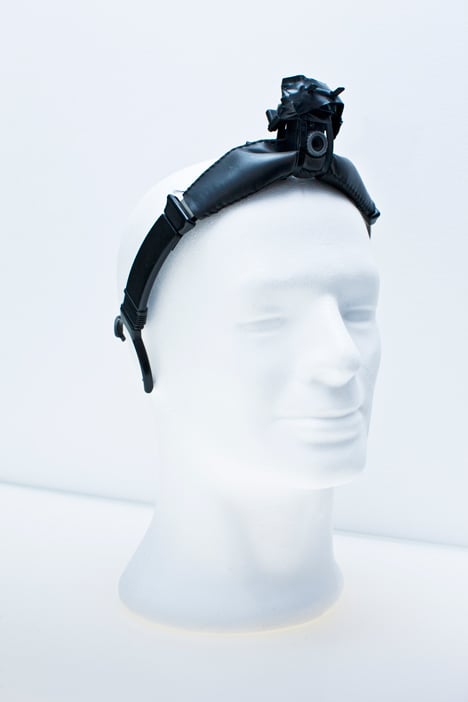
After a long battle with the UK authorities, Harbisson's passport now carries a photo of him wearing his eyeborg, making him the world's first government-recognised cyborg.
In 2010, Harbisson founded the Cyborg Foundation – an organisation whose mission statement is to "help humans become cyborgs, to promote the use of cybernetics as part of the human body and to defend cyborg rights [whilst] encouraging people to create their own sensory extensions".
Harbisson believes that recent technological advances mean there will be a rapid growth in the number of people with cybernetic implants that give them enhanced abilities. This in turn will change what it means to be human.
"Our instincts and our bodies will change," he said. "When you incorporate technology into the body, the body will need to change to accommodate; it modifies and adapts to new inputs. How we adapt to this change will be very interesting."
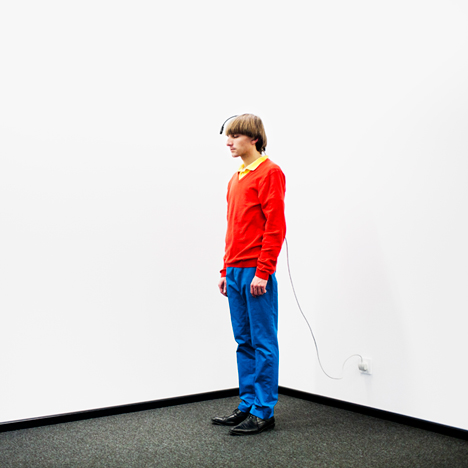
Other human cyborgs include Stelarc, a performance artist who has implanted a hearing ear on his forearm; Kevin Warwick, the "world's first human cyborg" who has an RFID chip embedded beneath his skin, allowing him to control devices such as lights, doors and heaters; and "DIY cyborg" Tim Cannon, who has a self-administered body-monitoring device in his arm.
However, Harbisson is sceptical of Cannon's cyborg credentials. "Tim is a very different user of technology because I'm not sure if he's extending senses of perception," said Harbisson. Cannon's device allows him to know the temperature of his body, whereas "the projects that the Cyborg Foundation is interested in extend senses and perception."
Harbisson has created a series of artworks using his eyeborg, creating sound portraits by scanning people's faces for different hues and turning the tones into short musical compositions.
The device also allows him to "listen" to architectural structures. The work of Catalan architect Antoni Gaudí is his favourite: "All of the spaces in his buildings have very interesting spaces that are just musical," he says.
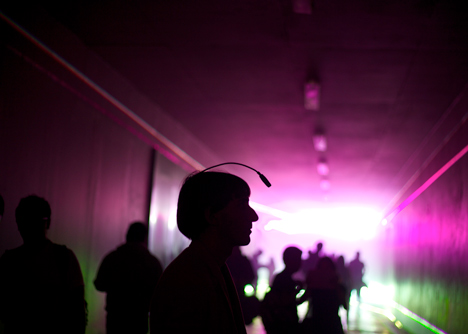
Here is a full transcript of the interview:
Ross Bryant: Firstly could you introduce yourself and tell us what you do.
Neil Harbisson: I'm an artist that wears an eyeborg, which allows me to perceive colour. I do colour concerts where I connect my eye to loudspeakers and I create sound portraits from looking at people's faces. I also do exhibitions where I exhibit the colours of music or the colours of sound. I transpose music into paintings as well as working with the Cyborg Foundation in Barcelona. We start projects relating to extending other people's senses by applying technology to the body.
Ross Bryant: Can you describe how you can hear colour?
Neil Harbisson: I have an antenna attached to my head that receives the light frequencies of the colours in front of me. These senses are connected to a chip in the back of my head that transposes light frequencies to sound frequencies. I see colours through a method of bone conduction.
Ross Bryant: You can do this because of the eyeborg. Can you briefly describe why you began the process of developing the eyeborg as well as beginning the process of becoming a cyborg?
Neil Harbisson: I was born completely colour-blind, so from a child I wanted to perceive colour. Then when I met Adam Montandon ten years ago, I realised that technology could be used to expand senses. I asked him if he could start a project to extend my senses and we began with this project. The first prototype was based on software, a five-kilo computer and a pair of headphones. We tried to find other people to make the extension smaller and more user-friendly and now it's in in this form of a chip and a sensor.
Ross Bryant: Before the creation of the Eyeborg, how did not being able to perceive colour affect you personally?
Neil Harbisson: Not seeing colour didn't make me feel disabled, it made me feel socially excluded. This alienation made me hate colour's existence, but I came to realise that I couldn't ignore colour forever - even if I couldn’t see it.

Ross Bryant: How do you charge the Eyeborg up? Do you connect it wirelessly or do you have to connect yourself up?
Neil Harbisson: I have like a USB-like connector that I put at the back of the head which allows me to plug myself in to the mains. I take three hours to charge myself and then I can go usually three or four days, but the aim is not to use electricity. One of the next stages is to find a way of charging the chip with my own body energy, so I might be using blood circulation or my kinetic energy - or maybe the energy of my brain could charge the chip in the future. That's one of the next things; to be able to charge the chip without depending on any external energy.
Ross Bryant: How does the eyeborg communicate the sound of colour to you?
Neil Harbisson: Each colour has a specific frequency that I can hear because of the Eyeborg. Infrared is the lowest sound and ultraviolet is the highest sound. I hear them through bone conduction. Basically, the sound goes to the back of the head and then my inner ear hears the different sign waves.
Ross Bryant: You can perceive ultraviolet light and infrared? Are these upgraded functionalities to the Eyeborg?
Neil Harbisson: Before it was all about upgrading the software, now we just upgrade the chip. We continue extending and upgrading the cybernetics and that's the good thing about cybernetics - you can keep upgrading the senses and perceiving more and more the longer you use it I guess. There's no end. So, I can now perceive near infrared and near ultraviolet, but the next stage is to perceive them from afar and just continue to extend this to be able to hear colours underwater and also in space.
Ross Bryant: Have you heard of Tim Cannon and the DIY cyborg? What are your thoughts?
Neil Harbisson: He is a very different user of technology because I'm not sure if he's extending senses of perception. Tim's device just allows him to know the temperature of his body, which is just giving him information. The projects that we're interested in at the Cyborg Foundation are those that extend senses and perception, not just the extension of information or abilities.
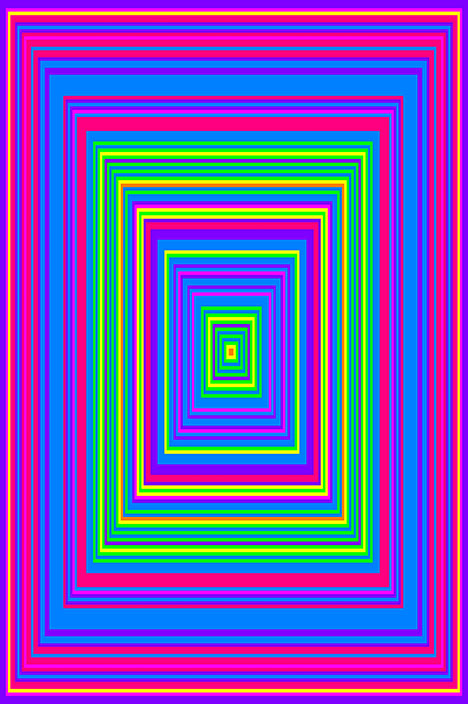
Ross Bryant: How do you think our relationship with technology is changing and what are your predictions for the future of cybernetics?
Neil Harbisson: I think the biggest change during this century will be that we will stop using technology as a tool and start using technology as part of the body. One way might be to extend our abilities or our knowledge, and other ways of using it would be to enhance our senses and perception of reality. I think this will be much more common in the next few years. Instead of using technology or wearing technology constantly, we will start becoming technology.
It's a very exciting moment in history - to perceive reality in a greater way. Our instincts and our bodies will change. When you incorporate technology into the body, the body will need to change to accommodate; it modifies and adapts to this new input. How we adapt to this change will be very interesting.
Ross Bryant: Do you think anything will exist in the near future that will enhance people's perception?
Neil Harbisson: I think we will start with very simple things like bone conduction. It's very simple and gives you the advantage of having a new audio input. Having bone conduction sensors is something we could use a lot. We will have antennas for different reasons. In my case, I'm using an antenna to perceive colour, but antennas could be used for perceiving many other things that we cannot perceive.
Having a bone input gives us a sense that doesn't block any other senses, so I think this gives us a lot of options. Also, just having sensors at the back of our body is something you can do simply with very simple technology. This enables you to have some sort of sense of what's behind you. Also, what we'd like to see is people using small, infrared sensors that vibrate so you know when there's someone behind which creates a 360 degree perception. Then there's other things such as orientation. Having a small compass implanted that vibrates whenever you face north could help a lot.
Ross Bryant: Do you have a favourite architect that you enjoy listening to?
Neil Harbisson: Yes! I enjoy listening to Antoni Gaudí's architecture. All of the spaces in his buildings have very interesting spaces that are just musical.
Ross Bryant: You were officially recognised as a cyborg in the UK in 2004 after you battled to have the Eyeborg included in your passport photo. Are there others with this recognised status or are you the first?
Neil Harbisson: I don't think I'm the first of anything. I just know that the government in England wouldn't allow me to have the electronic eye on my passport photo. I insisted that I wanted to have it included in the photo as it was an extension of my senses and a part of my body. In my case, I had to send many letters.

Ross Bryant: What cyborg rights would you like to see implemented?
Neil Harbisson: Human rights, but applied to people who wear technology as part of their body. There's public places that don't allow people in if they wear electronic devices and that's why we defend the rights of cyborgs. We defend their rights to go into these places. It's not creating new rights, it's just defending basic rights really.
Ross Bryant: At what point did you begin to feel like a cyborg?
Neil Harbisson: Feeling like a cyborg was a gradual process. First, I felt that the eyeborg was giving me information, afterwards I felt it was giving me perception, and after a while it gave me feelings. It was when I started to feel colour and started to dream in colour that I felt the extension was part of my organism.
Ross Bryant: Am I right in saying that you designed a fashion range based on people's favourite music?
Neil Harbisson: Yeah, we designed clothes that sound good. We created a full collection but now we just have a tie, a dress and a pair of trousers that are specific songs. Depending on what kind of colours you use, the piece of clothing will sound just like a specific song.
Ross Bryant: How do you think cybernetics will transform design, art and fashion in the future?
Neil Harbisson: The good thing about cybernetics is that it can allow you to have new senses. When you have a new sense, you can express yourself through it in a way that has never been explored before in fashion, architecture or any other type of art that exists. It's about exploring whole new possibilities, new senses that you can express who you are.